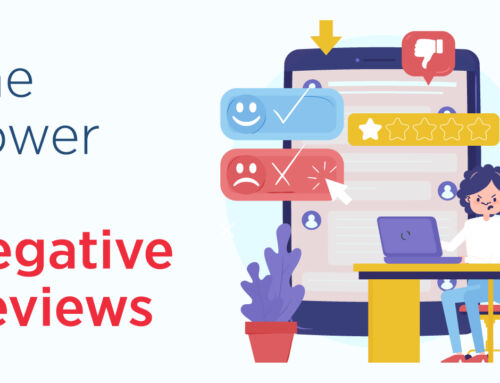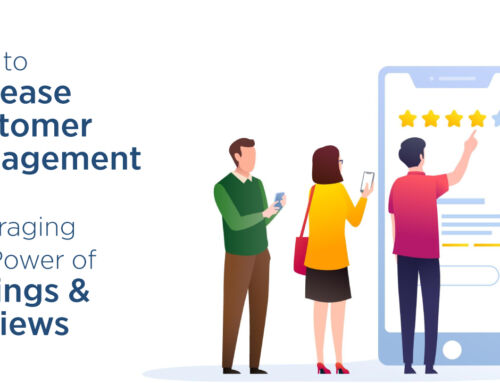Let’s talk about why content is king in the marketing world, especially when we’re all trying to get ahead in this B2B battleground.
Have you ever wondered why businesses invest substantially in crafting blogs, videos, and social posts?
This is because Content Marketing is the key to success in nurturing your audience by answering their questions and winning their trust. Before you know it, those casual browsers become potential leads and then loyal customers who can’t wait to hit ‘add to cart.’
But as digital spaces like social media grow, there are many different types of content to use—content created by users and by the brand itself.
Which is better – content from users (UGC) or the brand (BGC)? The best approach is to use both.
In this guide, we’ll discuss how you can benefit from both kinds. We’ll also explore how user and brand content can work together to your advantage.
Understanding UGC and BGC
UGC
User-generated content, or UGC, is any material, such as photos, videos, reviews, or personal stories, created by customers rather than the brand.
It’s a genuine form of expression because the company doesn’t pay for it. With the rise of social media, UGC has become popular because it lets customers engage in and shape the conversation by creating their content. People tend to trust UGC more because it features real customer experiences and honest opinions, unlike content made by companies.
Types of User-Generated Content
- Customer Reviews
This widely favored type includes customer ratings and written feedback. These insights into a product or service come from actual experiences and can be accompanied by photos or videos. You can find them on review sites, social media, or provided directly to the company.
- Social Media Posts
Platforms like TikTok, Instagram, and Facebook are perfect for user-generated content (UGC). People often post about their product use or interactions with a brand. These posts may have hashtags that make them easy to find. Even a brief, positive mention can be fantastic for the brand to reshare.
- Unboxing and product demonstrations
Unboxing and product demonstrations are now very popular online. People post videos where they open a new product and talk about what they think of it. These unboxing videos show features and give first impressions. Product demos are similar; they show how to use the product or highlight its benefits, helping potential buyers make informed decisions. Often, before buying anything, people search for these videos to learn more.
- How-to guides and tutorials
How-to guides and tutorials are another type of helpful content created by consumers. They explain how to use products through step-by-step instructions, show DIY projects, or offer creative ideas for product use. These resources are valuable for learning new ways to use items.
- Videos
User-generated content (UGC) from social media and YouTube videos can be highly effective. Many YouTubers post videos showing “product hauls” where they present and discuss items they have purchased, often including various brands. If they talk about your product, sharing that segment of their video can highlight what they like about it.
- Blog posts
If a blogger writes about your product—whether it’s a full review or a brief mention in a more extensive article—you can amplify their thoughts by posting their comments on social media or your website, helping more people learn about your product.
BGC
Brand-generated content, or BGC, is anything a brand creates to promote itself! Unlike user-generated content (UGC), the brand has complete control over BGC from creation to publishing. Although BGC was effective before, people are now leaning towards UGC because it resonates more with them.
Types of Brand-Generated Content
Brands produce a variety of content to showcase their products:
- Product photos
Clear, professional images of products from various angles are used to highlight key features and designs. These are often seen in online shops, social media, and advertisements.
- Product videos
Companies create videos that explain what their products do. These might show how to use the product, share customer reviews, or compare the product with others. The goal is to educate potential customers and show the product’s value.
- Social media posts
This content is tailored for platforms like Instagram, Facebook, Twitter, or LinkedIn. It can be text, photos, videos, or even funny images called memes. Its purpose is to engage people, start conversations, and make more people aware of the brand.
- Case studies and success stories
These are stories about how actual customers have benefitted from a company’s products or services. They prove the product works and show its positive impact in real situations.
- Video content
Companies also use video to present facts and figures engagingly. These videos can be featured on websites, social media platforms, or during presentations to simplify complex topics.
Advantages of UGC
- Authenticity and Relatability
Did you know that 84% of people trust recommendations from friends more than traditional ads? That’s because they believe user-generated content is made by real customers, not just the company.
Right now, many brands are fighting hard to get noticed. So, customers need to be more picky about which brands they pay attention to and buy from. To stand out, don’t fall into the trap of putting out fake customer posts. People can tell when something’s not genuine. Always make sure any user-generated content is from faithful customers, devoted fans, or your employees.
- Social Proof
Brands can gain trust by showing that others value their products, a concept known as social proof. This idea works because people often want to follow the actions of others they relate to.
User-generated content (UGC) is an excellent example of social proof. When customers share their positive experiences with a brand or product, it encourages others and can make them more likely to buy.
- Cost-Effectiveness
Marketing campaigns can cost millions of dollars. In comparison, getting your customers to show how much they enjoy your product is almost free.
That’s why using UGC is a money-saving strategy for growing your business. It helps you engage directly with your most important group – your customers. Especially for newer or smaller brands, UGC is usually much more affordable and more straightforward to handle than considerable advertising efforts.
Advantages of BGC
- Control and Consistency
Brand content is critical to a uniform brand identity—controlling the imagery and messaging. The brand takes charge of what’s shown, ensuring that the photos and videos reflect its principles and marketing goals.
- High-Quality and Professional
Brand content is crafted to match marketing strategies and uphold the brand’s reputation. This results in polished, top-quality material that consistently delivers the brand’s core messages effectively.
User-Generated Content vs. Brand-Generated Content: Key Differences

When to Use UGC
- Building Trust
User-generated content (UGC) is highly effective because it comes directly from customers. Its authenticity and the genuine use of products in everyday settings make it relatable. Using UGC in your marketing can be a powerful tool. It’s more than just raw content; these are real people sharing their experiences with your products, which can resonate well with potential customers.
Studies have confirmed that UGC boosts trust and loyalty for online brands. With 80% of people saying user content strongly influences their buying choices, it demonstrates its power in driving sales. Moreover, since 90% of customers read reviews before making a purchase, UGC is crucial for showcasing your product’s reliability and effectiveness.
User-generated content is essential if you want to earn your audience’s trust; it excels in this domain.
- Encouraging Engagement
One of the most significant advantages of user-generated content (UGC) is its ability to boost engagement significantly. Such authentic interactions with customers can encourage more people to get involved with your brand.
While focusing on sales is critical, measuring how eager people are to engage with your brand is also crucial. User-generated content can significantly heighten this enthusiasm. This increased involvement often comes from the community-like nature of UGC. People enjoy sharing their experiences, views, and creativity.
When you provide a place for them to post their content, you’re creating a space for social interaction that prompts even more people to participate in the discussion.
- Leveraging Social Media
User-generated content (UGC) adds variety to your content by including things like social media shares. This keeps your audience not just engaged but interested too. Such diverse content keeps your brand fresh and adaptable. UGC brings in a range of perspectives and stories, ensuring your content stays relevant. It also allows your brand to connect more meaningfully with various audience groups, promoting inclusivity and a sense of belonging for all.
When to Use BGC
- Launching New Products
Creating content specifically for your brand is vital to building its value. This type of content helps people link their daily experiences to your brand, which is particularly helpful when introducing new products.
It’s designed to attract the attention of the most relevant audience on the best platforms. Plus, it highlights what makes your product or service different, allowing you to focus customer discussions on these critical features.
- Conveying Complex Information
Most people don’t buy something on their first visit to a website. Instead, they go on a journey as they think about making a purchase. Companies can smooth out this journey with good content marketing—the kind of information that helps visitors become loyal customers.
Companies prepare all sorts of content to guide customers from the early stage, where they’re just learning (educational articles are helpful here), to the later stages, which involve deciding to make a purchase, sticking with the brand, and even recommending it to others.
Blogs, social media posts, and detailed guides are ways companies share information. Case studies and online seminars offer a deeper look at what the company provides.
- Targeted Marketing Campaigns
Marketing that focuses on a specific audience has several advantages over traditional methods. It not only improves the impact of your ads but also helps you form stronger connections with your audience. By selecting the right audience, you can share your content across different platforms and channels.
This broad distribution is crucial as it reaches a wide variety of people, not just a small, specific group, but one that includes many different ages, backgrounds, and interests.
Combining UGC and BGC
User-generated content (UGC) and Brand-Generated Content (BGC): Which should you use?
The best option is to use both!
A mix of UGC’s genuine trustworthiness and social proof and the polished professionalism of BGC allows brands to craft a content strategy that is both engaging and effective in meeting marketing goals.
How Caddle Can Help
Caddle empowers brands to efficiently gather and distribute UGC, ensuring they can quickly and effectively incorporate this powerful tool into their broader content strategy.
With Caddle, brands can strike the right balance between polished brand narratives and the raw endorsement of satisfied customers, making it a strategic ally in the domain of UGC.
Here’s why Caddle is beneficial:
– Fast Review Collection: Reviews are crucial for online sales. Caddle can gather and publish reviews in just 72 hours after a product launches, which helps brands use UGC to increase trust and sales quickly.
– Saves Money: Caddle reduces costs by confirming purchases with uploaded receipts instead of sending out free samples. This approach also speeds up the UGC collection process.
-Keeps Brands Noticeable: Regularly collecting reviews means brands stay in consumers’ minds. Caddle ensures that brands are frequently seen in a busy market through either one-off or ongoing reviews.
– Broad Review Sharing: Caddle doesn’t just collect reviews; it shares them with big retailers like Walmart and others. This expands UGC’s influence, allowing brands to gain from the trust associated with these well-known stores.
To learn more about the power of UGC, schedule a consultation today!





Leave A Comment